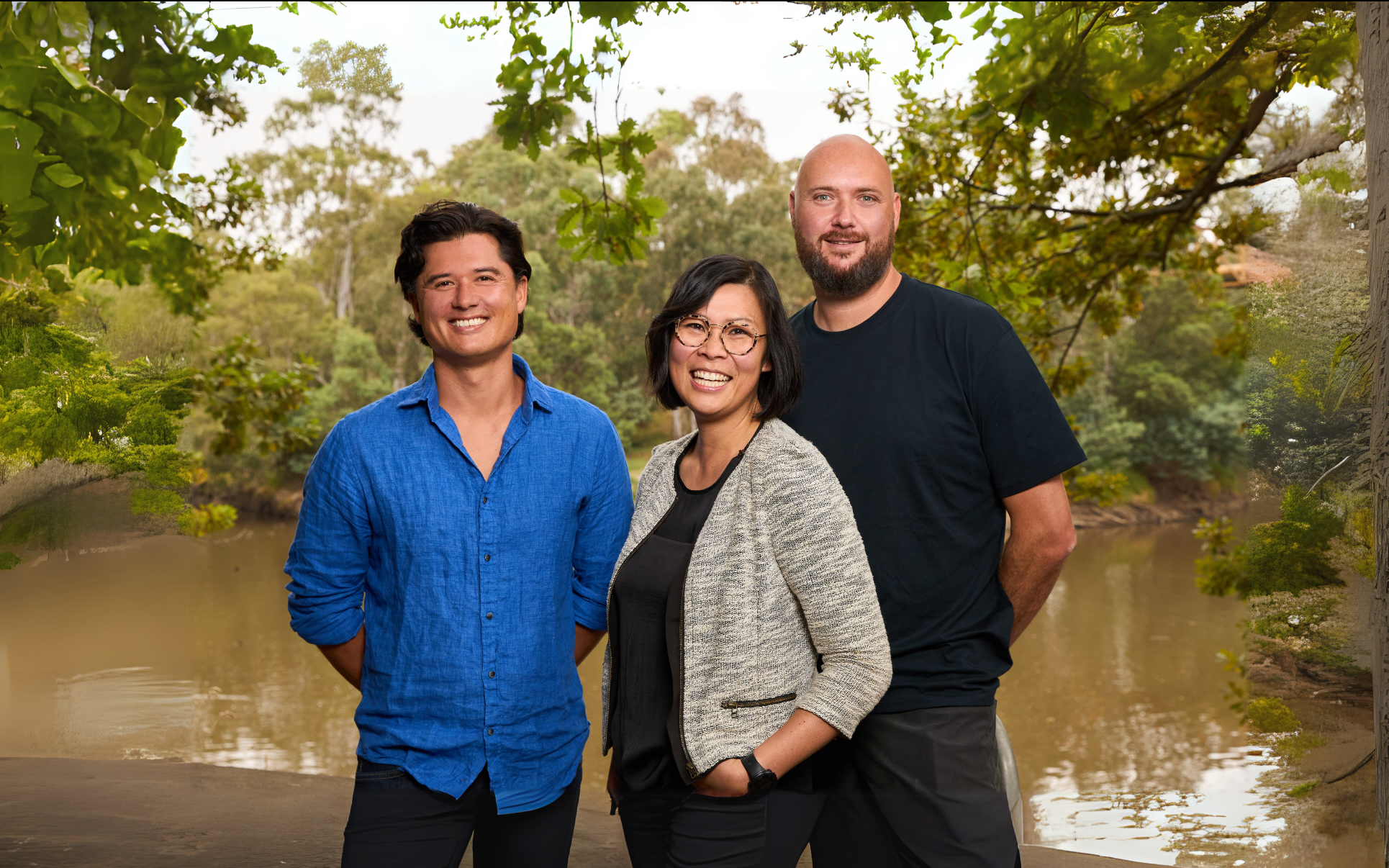In the Theory of Change series, we break down Giant Leap’s impact thesis for each investment and share how we think they’re changing the world through tackling our most pressing problems. Check out our Starter Guide to Theory of Change for more context.
CLT Toolbox is a SaaS solution that radically simplifies the process for designing with zero- and low-carbon materials, including mass timber.
With embodied carbon in the built environment currently accounting for ~11% of global emissions and global building stock set to double as the world’s population approaches 10 billion by the middle of the century, cutting these emissions in a sustainable, environmentally responsible way presents a very urgent problem.
Led by co-founders Adam Jones and Ringo Thomas, CLT Toolbox’s rapid growth trajectory is set to continue with their expansion into the US and European markets this year, as they take their mission to make mass timber a mainstream construction material global.
Here’s Giant Leap’s impact thesis for our investment in CLT Toolbox.
Construction’s embodied carbon problem
Buildings are currently responsible for 39% of global energy-related carbon emissions: 28% from operational emissions – the energy needed to heat, cool and power buildings – and the remaining 11% from materials and construction.
The latter category is referred to as ‘embodied carbon’, being the greenhouse gas emissions associated with materials and construction processes throughout a building or infrastructure asset’s entire life cycle. Embodied carbon is irreversible once an asset is built and, depending on the type of building, can account for up to 50% of its lifetime emissions.
What does this look like? It’s the billions of tonnes of concrete, steel, asphalt, glass and other construction materials that go into building, maintaining and operating the built environment, and the resulting, often devastating environmental degradation from resource extraction.
To date, two main culprits have made it extremely difficult to reduce the built environment’s embodied carbon – concrete and steel.
The manufacturing of concrete, and its key constituent material cement, contributes an estimated 3% of global GHG emissions each year, and metals production contributes an additional 5% of global emissions. To put this in perspective, if metal and concrete were countries, they would rank third and fourth in the world in greenhouse gas emissions production after China and the USA.
There’s therefore no solving the climate emergency without addressing the embodied carbon problem.
The solution: adopting low and zero-carbon alternatives
Mass timber products, including cross-laminated timber (CLT) and glue-laminated timber (GLT), are the leading sustainable substitutes for reinforced concrete and steel.
Timber has a much lower embodied carbon footprint than traditional materials, as it requires less energy to produce and therefore generates fewer emissions during manufacturing. Hybrid buildings using mass timber can see a reduction of up to 75% in their embodied carbon, according to the Clean Energy Finance Corporation (CEFC).
In addition, timber has natural biogenic carbon sequestration benefits. Carbon sequestered by trees during growth is retained within timber after it is harvested, meaning that timber used in construction continues to act as a carbon sink for the lifetime of its usage – with significantly greater capacity for carbon storage than concrete. Responsible timber plantation management also ensures that mass timber products can be used without depleting natural resources. Mass timber can also increase the efficiency of sustainable forestry as it can be made with younger, fast-growth trees and can be constructed from smaller sections of timber which increase the usable material from a tree.
Mass timber can be used in virtually any building type, including high-rises, and is highly competitive thanks to its exceptional strength, weight and thermal performance, construction convenience, and supply chain maturity compared to other low-carbon alternatives like green concrete and recycled steel.
Closing the education gap
Despite the urgent need to decarbonise and numerous advantages of using mass timber in construction, there’s a huge education gap preventing the mainstream adoption of mass timber.
Designing with mass timber materials is incredibly technically complex. University curriculums have not been able to keep pace with the rapid pace of materials innovation, meaning the vast majority of engineers and architects don’t have the expertise to design with them. On-the-job upskilling takes hundreds of hours and isn’t commercially viable, and current design processes require highly manual, messy and error-prone single-use Excel spreadsheets. This sees structural engineers and architects acting as blockers, rather than enablers, of the transition to sustainable design – regardless of good intentions.
CLT Toolbox is solving this problem by providing engineers and architects with the digital infrastructure to design complex timber buildings, so that any qualified designer can use mass timber products. The platform also includes a robust supply chain marketplace to enable designers to efficiently and sustainably source the materials they need, removing friction in the procurement process. The status quo is a well-forged path, but change happens when new pathways are created and made easy.
The team is uniquely positioned to solve this problem, thanks to its deep technical expertise – CEO Adam Jones is a recent award winner of the Engineers Australia Emerging Professional of the Year Victorian Award for his contributions to the advancement of sustainable construction practices, and winner of the 2019 Future Green Leader of the Year by the Green Building Council of Australia for his work in mass timber design.
The team also intends to further deepen its impact over time as it expands the platform to include other sustainable building materials like laminated bamboo, green concrete, green virgin steel and recycled steel, as supply chains mature.
Sustainable forestry
Addressing the climate crisis must be done within planetary boundaries. All mass timber suppliers on the CLT Toolbox platform source their products from forests accredited by either the Forest Stewardship Council (FSC) or the Programme for the Endorsement of Forest Certification (PEFC), the two leading global certification bodies.
CEO Adam Jones has said that “this certification ensures that the trees are harvested sustainably, with a commitment to replanting, balancing environmental, economic, and social needs.” Timber products, when managed sustainably and in a way that respects natural ecosystems, are one of the few renewable resources of structural material that can be used at scale.
Giant Leap's Impact Thesis
The Theory of Change for our investment in CLT Toolbox
If Giant Leap supports CLT Toolbox with values-aligned capital, then CLT Toolbox’s software will be able to reduce barriers faced by structural designers in designing with zero- and low-carbon materials, foster a robust supply chain, and enable the accelerated adoption of sustainable building practices. This will lead to a significant reduction in embodied carbon in the built environment and ultimately contribute to achieving net zero by 2050.
Impact metrics
- Tonnes of CO2 emissions avoided
- Tonnes of CO2 sequestered through biogenic carbon benefits of mass timber
You can read more about CLT Toolbox’s raise here.
---
To stay close to the heartbeat of Giant Leap, sign up to the Small Steps newsletter.

.JPG)



%20-%20Edited.jpg)


